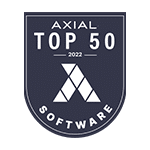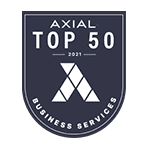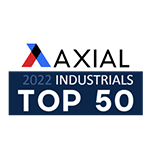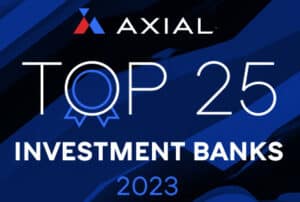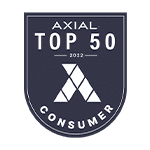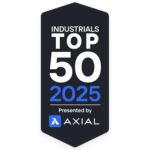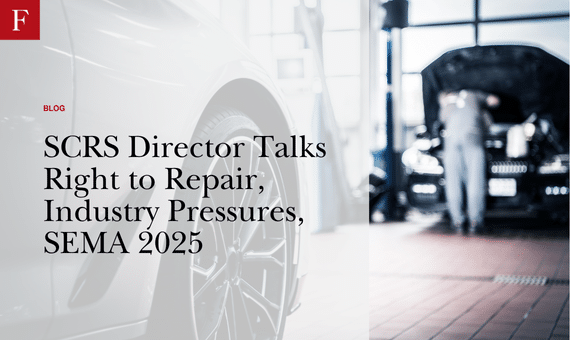
SCRS Director Talks Right to Repair, Industry Pressures, SEMA 2025
Aaron Schulenburg shares what he’s hearing are shops’ biggest concerns and opportunities, and how SCRS can help.
Aaron Schulenburg is executive director of the Society of Collision Repair Specialists (SCRS), a tireless advocate for collision repairers and a trusted voice on the biggest topics shaping the industry.
Schulenburg appeared on a recent episode of The Collision Vision podcast, driven by Autobody News and hosted by Cole Strandberg, to dive into some of the hot button issues, including right to repair, as well as what to expect at upcoming events like CIC and the SEMA Show, and what SCRS has planned in the months ahead to continue its support of the industry.
Right to Repair
Vehicle owners want to be able to choose where to get their vehicle repaired — which can mean an independent shop — and which parts are used, Schulenburg said.
“As an organization that represents independent repairers, we agree with that,” he said. “I think the automakers that we work very closely with agree with all of that in the fact that their customers and our customers are mutually benefited when there is a strong independent market who’s able to fix cars properly with the information that’s available.”
However, there’s a difference between supporting consumer choice and protecting the ability to commercially influence what consumers choose. “Those aren’t the same thing,” Schulenburg said.
There is already OEM repair information available to independent shops, Schulenburg said.
“I think that there’s a lot of miscommunication that happens sometimes at the federal level saying that that doesn’t exist,” he said. “And the reality is today, there are thousands of collision repair shops across the United States that are very capable of restoring those vehicles and doing it the way they’re supposed to be done.”
SCRS is working with automakers and other repair groups to write the SAFE Repair Act, a bill that ensures consumers can choose where and how they get their vehicle repaired, but also addresses “some of the obstacles that keep independent collision repair businesses from being able to deliver on that promise of performing the repair properly in the way that the data and the repair procedures instruct,” Schulenburg said.
The bill “would ensure that consumers, rather than insurers, have the right to decide where and how their vehicles are repaired,” he said. It also seeks to guarantee consumers are still protected by recalls, no matter what type of part they choose to be used in a repair, and by a thorough post collision and periodic safety inspection program.
“I think there’s a lot of stuff that really is about the consumer’s right to choose safety,” he said.
Schulenburg said he is frequently asked what progress has been made in making OEM repair procedures available to independent shops.
“I think that question often assumes that the procedures aren’t already available, and they are,” he said.
The misconception is “created by people who may have an ulterior motive in what they want to access from the vehicle, or things along those lines,” Schulenburg said.
He said he speaks every day with small, independent collision repair businesses that have access to OEM procedures, but face other obstacles — namely, other segments of the industry that haven’t embraced the idea that those procedures need to be followed every time.
Schulenburg pointed out the SAFE Repair Act is different from the REPAIR Act, which he said is supported largely by groups like insurers and the aftermarket parts lobby.
Shops can get involved with advocating for legislation by using their voice to engage with legislators.
“People who are responsible for evaluating bills and creating laws want to hear from their constituents,” Schulenburg said. “I think every business has the ability to reach out and say, ‘Here’s what I’m going through and here’s what matters to me.’ And even if you don’t understand each of the bills, being able to express what your reality looks like helps shape the perspective of what needs to be fixed.”
He also suggested helping customers tell their stories to legislators.
People who aren’t comfortable speaking to legislators directly can get involved with auto body associations that represent repairers at a state or federal level.
“It’s a great avenue to be part of a collective voice,” Schulenburg said.
SCRS’ website includes contact information for nearly 35 associations that represent businesses at the state level.
What Currently Matters to Shops
Strandberg asked what shops are telling Schulenburg when he’s engaging with them around the country.
“A lot of the conversations I’m having today are around the technology that is driving some of the requirements that we have on following procedures, and making sure that they have access to that information and that they understand how to go and utilize that,” Schulenburg said.
Repairers are also reporting a lot of pressure.
“Pressure on pricing, pressure on rates, pressure on what type of procedures are being acknowledged and reimbursed for, and the challenges that puts the consumer in when they’re looking to receive that repair that puts them back into the condition that they were prior to the prior to the loss,” he said.
There are some “interesting effects” caused by insurers trying to control their own costs by putting pressure back on the industry, Schulenburg noted.
“While they’re objecting to rate caps or downward rate pressure on their own premiums, they’re looking to apply it back in the collision repair space,” he said. “And what displaces an insurer similarly displaces small businesses that are trying to also adjust for inflation and…the rising costs of not just parts and materials, but of the labor that they employ to be able to fix these vehicles properly.”
The emerging trend of insurance carriers negotiating pricing agreements with vendors is also creating challenges for shops that use those vendors’ products.
All of those pressures are being amplified by the slowdown in claims.
“It requires a very strong understanding of your business mission…to really be able to maintain what you’re looking to accomplish, rather than allowing some of that exterior influence to change the way that you’re intending for your business to operate,” Schulenburg said.
On the positive side, a lot of shops are prioritizing the customer experience, which includes a safe, proper repair.
“I think there’s still a very broad array of different types of businesses and what they’re structured like, but I see more and more businesses today that are focused on following those procedures, producing thorough repairs, delivering on the customer experience in a way that creates a very uniform expectation between what they want from their auto manufacturer and what they want from their independent repair facility,” Schulenburg said.
He said he remembers when insisting on following OEM repair procedures was viewed as a “very radical position.”
“I don’t think that’s the case today. That’s what we expect as the standard of repair in the industry,” he said.
There’s still work to be done to bring every shop to that level, however.
Another positive trend is the amount of information available, and the number of channels through which it can be accessed.
“Social media can bring both benefit and challenge, but I don’t think that businesses operating in our space today have any shortage of places to go get help or information or to learn more about the industry, and that wasn’t always the case either,” Schulenburg said.
Resources for Collision Repairers
SCRS is dedicated to helping repairers navigate challenges like attracting and retaining employees.
“If the collision repair industry isn’t attractive [to employees], we’re going to see them exit into other areas that have technical requirements but may provide more,” Schulenburg said.
SCRS has built programs to help employers offer better benefits, like health care and retirement savings. Schulenburg said he has heard stories from shop owners about how those benefits have improved their employees’ lives.
The organization is also working with I-CAR, the Collision Engineering Career Alliance and the Collision Repair Education Foundation to build the training curriculum needed to attract talent.
“These are entities that are all doing a lot of good work in this space, and it’s important for them to have the support and input from the collision repair professionals, such as our members and our group,” Schulenburg said.
Another challenge repairers are facing is the ability to capture all billable items, which directly affects being able to pay technicians.
The Database Enhancement Gateway (DEG) addresses errors and inaccuracies in whichever estimating system a shop is using, and SCRS’ Blueprint Optimization Tool (BOT) captures any missed or overlooked operations.
SCRS is constantly reinvesting the support it gets from the industry into programs and tools that “can meaningfully change the outcome,” Schulenburg said.
Attending Industry Events
The next quarterly Collision Industry Conference (CIC) meeting is scheduled for Nov. 4 in Las Vegas — also opening day for the 2025 SEMA Show in the same city, running through Nov. 7.
Schulenburg encouraged all shop personnel to consider attending a CIC meeting — held in different cities every quarter — if one is in the shop’s area.
“I think there’s a lot of value that comes from getting out of your facility and meeting with other people who may be of like mind, who may be from different sides of the industry, who you may not otherwise have exposure to,” he said.
There are also opportunities during CIC meetings for attendees to address issues important to them, whether during a committee presentation on a related topic or during an open mic session.
Schulenburg is a co-chair of the Industry Experiment Committee, which conducts its presentations at CIC meetings like an “in-person podcast.”
“It’s going to be structured in the same type of way, where we can just have a candid deep dive into what does a relevant issue that’s affecting repairers look like today,” he said.
At SEMA, SCRS is again producing its Repairer Driven Education lineup of educational sessions, as well as the IDEAS Collide Showcase, which brings together several speakers for “industry-specific TED Talks.”
“It’s one of my favorites because I think it pushes people outside of their comfort zone in delivering on their ideas in a different way,” Schulenburg said of IDEAS Collide. “If you’re in the audience and you’ve got 10 speakers in 10 minutes apiece, you’re getting these snapshots of really cool perspectives on topics that maybe you wouldn’t go sit through a whole class on, but you get exposed to this idea and you get a chance to go and research it a little further.”
Both the educational sessions and the IDEAS Collide Showcase feature a wide array of first-time speakers, from technicians and shop owners to representatives of companies in the industry.
The sessions must be reserved in advance. Schulenburg recommended SEMA Show attendees opt for the full series pass, which allows attendees to attend as many as they want.
Looking Ahead
Schulenburg thinks specialization will be a big opportunity for shops over the next few years, but a particular type.
“In light of all the dynamics and pressures that we talked about earlier, I think specialization on expertise around safety and safety restoration becomes really critical,” he said. “That may mean certification. It may mean brand specific. It may mean all those things.”
Consumers are going to continue to choose vehicles for ADAS and other features that keep them and their family safe, Schulenburg said, and “if you can speak that language and you can show your capability around it and you can demonstrate how you’ve made an investment in restoring that, I think you do a better job of connecting with the consumer.”
Shop owners and managers who might be feeling overwhelmed by the rate of change in the industry should embrace “a willingness to reinvent your business on a regular basis,” he said.
“I don’t think that’s unique to our industry. I think that’s every business that wants to stay relevant,” he said. “The expectations are going to change. The pressures are going to change. The technology is going to be different five years from now than it is today. I think the willingness to commit to investment in change becomes the easiest way to be comfortable in it.”
He recommended shop operators invest in training, tools, equipment and infrastructure needed to adjust and adapt.
That willingness to learn and move with changes will also attract younger technicians, Schulenburg said.
“The younger generation is interested in the changing dynamics. They’re interested in things that are going to feel different tomorrow than they felt today,” he said. “I think if we can capitalize on that, build a business that revolves around changing with it, I think there’s a there’s a lot of opportunity there.”
Previously published on Autobody News.



